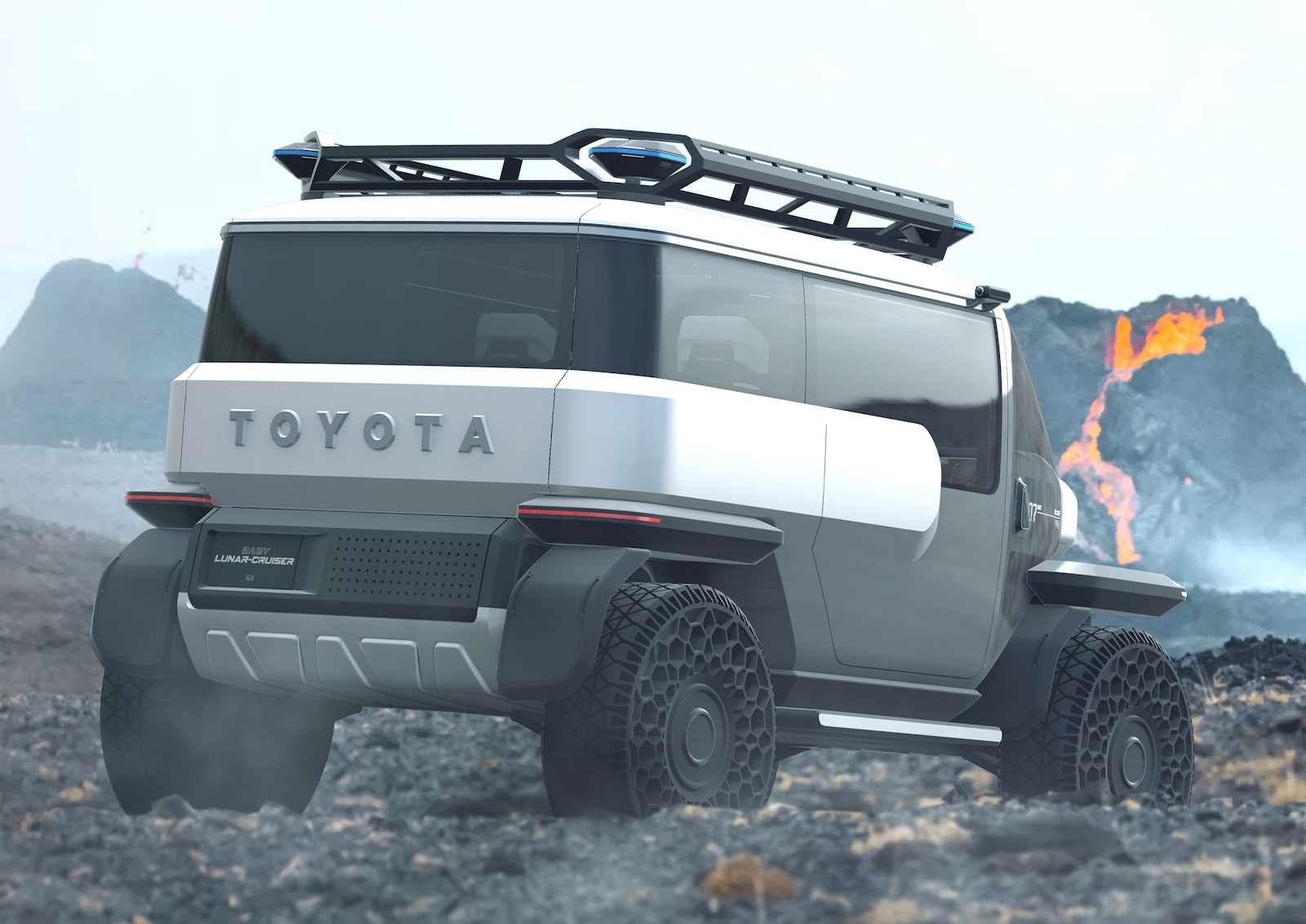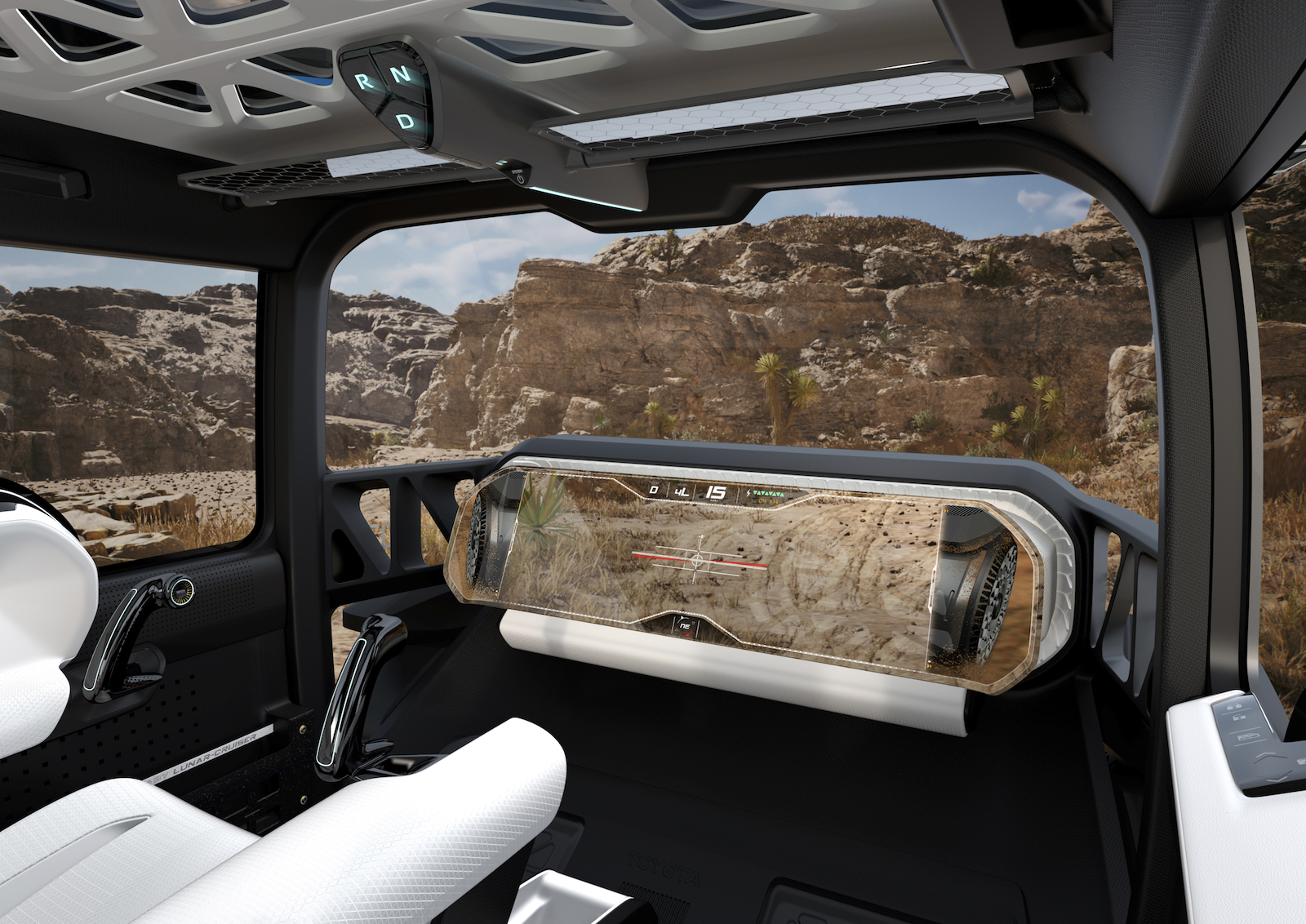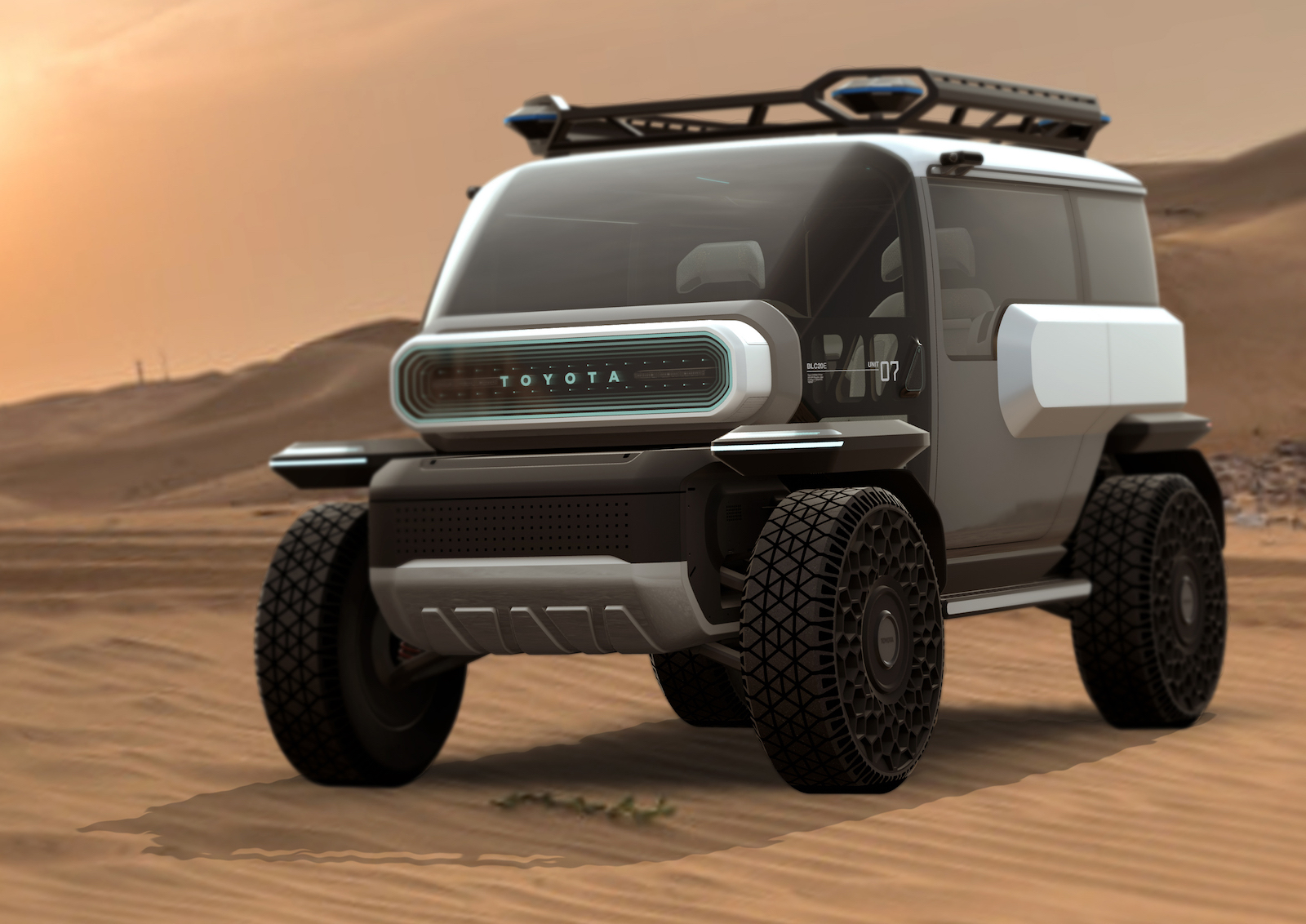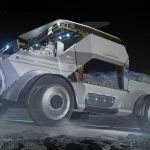The Baby Lunar Cruiser, a brand-new concept developed by Toyota and the Japanese Aerospace Exploration Agency (JAXA), was unveiled Thursday by Toyota.
The interplanetary exploration vehicle draws design inspiration from both the needs of space exploration as well as earthly travel requirements set out by the original Toyota FJ40. It has an electric motor for each wheel, and dual joysticks are used to control its airless tires. An instrument panel with an augmented display is inside.
The Japanese manufacturer is collaborating with JAXA to create a new lunar rover for the organization’s planned new moon trip in 2030. But it’s not alone.
General Motors, which built the original lunar rover with help from Boeing, announced in June 2022 that it’s readying its Ultium batteries for use in a new lunar rover it’s building with partner Lockheed Martin for the next space mission slated for 2024. It’s also providing batteries for Blue Origin, Amazon founder Jeff Bezos’ private space company, and SpaceX, owned by Tesla CEO Elon Musk.
And there’s more … companies
Not to be left out, Hyundai and Kia signed joint research agreements with six South Korean research institutes to develop mobility solutions to explore the moon in July 2022.

The interplanetary exploration vehicle draws design inspiration from both the needs of space exploration as well as earthly travel requirements set out by the original Toyota FJ40.
But it was GM working with Boeing that developed the first lunar rover vehicle, a story chronicled in “Across the Airless Wilds: The Lunar Rover and the Triumph of the Final Moon Landings” by Earl Swift.
GM and Boeing landed the contract by beating out several competitors, including Chrysler Corp., after working with NASA on lunar rover studies throughout the 1960s.
Weighing 460 pounds, but less than 80 pounds on the Moon, the lunar rover was about two feet shorter than a Mazda Miata.
“There was very little to it — it was tiny, its seats looked like lawn chairs, and it lacked a body or a roof or a steering wheel or much of anything, besides wheels, that typically define a car,” Swift writes in the book.

Dual joysticks control the lunar cruiser’s airless tires. An instrument panel with an augmented display is inside.
A 1-horsepower electric motor was fitted to each wheel, which were made of stainless-steel wire-mesh. Two steering motors and brakes were also fitted.
Toyota provided few details about its Baby Lunar Cruiser concept.
It’s no surprise that Toyota’s concept would spring from the fertile imaginations of the company’s CALTY Design Research Center in Newport Beach, California. When Soichiro and Eiji Toyoda established the facility in 1973, they did so to capture ideas and trends that originated in The Golden State.
The facility is celebrating its 50th anniversary this week, and highlighting its contributions to Toyota’s product lineup, one that started with the 1978 Toyota Celica, and continues to this day.





0 Comments